France is a FeastThe Photographic Journey of Paul and Julia Child
An arresting collection of photographs by Paul Child documenting his life in postwar France with his wife Julia, the beloved doyenne of culinary arts
France is a Feast documents, through intimate and compelling photographs, Julia Child discovering French cooking and the French way of life. It all began under the guidance of her husband, Paul Child, a passionate photographer. Paul and Julia Child moved to Paris in 1948 where he was the cultural attaché for the US Information Service in Paris, and in this role he first met Henri Cartier-Bresson, Robert Capa, Brassaï, and other leading lights of the photography world. As Julia recalled: ‘Paris was wonderfully walkable, and it was a natural subject for Paul.’ Their wanderings through Paris and other French cities and towns and the French countryside photographed by Paul, would help lead to the classic Mastering the Art of French Cooking, and Julia Child’s brilliant and celebrated career in books and on television.
Though Paul Child was an accomplished photographer (his work is in the collection of the Museum of Modern Art, acquired by Edward Steichen), his photographs remained out of the public eye until the publication of Julia Child’s memoir, in which many of his photographs were included. In helping to tell Julia’s story, they also brought to light the remarkable photographic achievement of Paul Child.
Alex Prud’homme, the grandnephew of Paul Child, is the co-author with Julia Child of the New York Times #1 bestseller My Life in France, which also inspired half the film, ‘Julie & Julia’, starring Meryl Streep as Julia. He recently wrote a book about Julia Child during the 1970s, titled The French Chef in America: Julia Child’s Second Act. He lives with his family in Brooklyn, New York.
Katie Pratt is a photography curator raised in Cambridge, Massachusetts, whose parents were among Paul and Julia Childs’s closest friends. She lives in Marin County, California.
Julia Child’s time in France has been well documented. Now Paul’s story, through his photographs, is bing told. Authors Katie Pratt and Alex Prud’homme talk about compiling photographs and writing about, arguably one of the most famous and yet unknown people of the culinary culinary world.
Books about Food Q&A on FRANCE IS A FEAST: THE PHOTOGRAPHIC JOURNEY OF PAUL AND JULIA CHILD
1. Was it hard to narrow down the selection?
Katie Pratt (KP): There were so many images to choose from, ones that told a story, elaborated on Paul’s themes, or illustrated his artistic vision and captured a well balanced, powerful composition. I was moved and inspired by so many of his photographs. Editing the thousands down to just over 200 images for the book was challenging, but it was a good problem to have as there are still so many more photographs worthy of attention.
2. How many photos would did you have to go through?
KP: Initially I reviewed several thousand images, most of them were on negative strips. My process involved viewing the negatives on a light table and determining which ones to examine more closely, then using the cross-reference materials of Paul’s letters and his log books I would confirm the location, subject and date, and the story that was going on when the photos were taken.
3. To those unfamiliar with him what would you tell them about Paul?
Alex Preud’homme (AP): Paul and Charlie Child were identical twins, born in 1902, and raised in Boston. The twins were mirror images of each other: Charlie was left-handed, Paul was right-handed; Charlie was loud, Paul was quiet; Charlie “opted for chaos,” and painted flowers bursting with color or raging storms, while Paul was drawn to the calm and control of photography.
Their father was an engineer who died when the boys were just 4 months old. Their mother was a beautiful singer, but she could barely handle the rambunctious twins. They skipped school, and got into fights with gangs on Boston Common. Yet they were bright, and Charlie went to Harvard, while Paul attended Columbia – until the money ran out. In the 1920s, Paul worked as a scene painter in Hollywood, a ditch digger in Boston, and as a deckhand on a schooner. Then he moved to Paris, where he was a struggling artist and tutor; he became fluent in French, a gourmet, and knew Gertrude Stein and Ernest Hemingway.
In the 1930s, Paul moved to Cambridge, Mass, where he taught at the Shady Hill School and lived with an older, divorced woman named Edith Kennedy. She died of heart disease in 1942. Bereft, Paul joined the OSS, the precursor to the CIA, and was stationed in Sri Lanka. There, he designed maps and a secret war-room for Lord Mountbatten; he also met a 6’ 2” clerk typist named Julia McWilliams. They bonded over food and books, and married in 1946.
They say opposites attract. While Julia was a tall blast of sound and light, Paul was a decade older, four inches shorter, and many decibels quieter, than she. He was intellectual, contemplative, a visual artist, prickly, and humorous. He was also a black-belt in Judo, had built a log cabin in Maine, and knew how to tie a bowline knot with one hand. Julia was smitten by this man of many parts.
4. What sort of sense of his work did Paul have? Was he a harsh critic?
AP: Paul was a careful – sometimes obsessive – editor of his own photographs. When you look at his contact sheets, you see him winnowing out inferior compositions, cropping images, and instructing his printer – Pierre Gassman – to dodge and burn and modulate contrasts. In his logbooks, Paul made copious notes on how, where, and when each image was shot, and he frequently photographed the same subject at different times of day, or season, to see how the image changed with the light and perspective.
Paul was fully in control of his technique, and always experimenting with new subjects, approaches, and aesthetic boundaries. Rather than call him a “harsh” critic of his work, I’d say he was an exacting artist.
5. Many of these photos capture a bygone era in France. Was it your intention to not only have photos of Julia but also to give a sense of time and place?
AP: Absolutely – while there are lovely images of Julia, Paul’s muse, one of the pleasures of these photographs is his portrait of France, his other great love, at a particular moment in its history: 1948-54.
This was just after World War II, and during the Cold War. As a cultural attaché in the US embassy, Paul was in an enviable –perhaps unique – position to observe everything from geopolitics to daily life. The Childs had to contend with food and power shortages, and worries about a Russian invasion or nuclear war; but they also witnessed France’s rebirth, and a return to normalcy. Paul and Julia would walk around the city, sticking to narrow unknown byways rather than grand familiar boulevards, snapping pictures of Sacré Coeur and the Seine River, artists and fishermen, kids, cats, advertisements, bridges, and working men and women. Paul had a well-trained, voracious eye: he documented all of this life in “decisive moment” snapshots, portraits, carefully composed artistic shots, and sweeping cityscapes.
Paris was a cultural ferment at the time, and Paul met – and worked with – many of the leading photographers of the 20th century. Though he had his own artistic vision, he was influenced by the work of contemporary masters, such as Capa, Brassaï, Steiglitz, and Cartier-Bresson, among others.
6. Paul famously and devotedly worked behind the scenes supporting his wife. Any idea to what he might think of his work now taking center stage?
AP: The Childs’ relationship was remarkable, even by modern standards. While they lived in France, Paul was the “senior” member – the worldly, older diplomat who tutored the ingénue Julia about food, wine, politics, and culture. But when he retired in 1961, Paul stepped back and pushed Julia forward, into the limelight – saying, in effect: “It’s your turn now.”
Paul called this marital shift “Nature restoring an upset balance.” And he described his new role as “The part of the iceberg that doesn’t show above water” – which is a wonderful metaphor, and apt. When you think about it, the ice under the water is much bigger than the peak above it, and acts as ballast to keep the peak upright and sailing smoothly. Likewise, Paul was crucial to Julia’s success. He was her staff photographer and chief editor, culinary guinea pig, head dishwasher, business partner, best friend, and co-conspirator.
Paul enjoyed his diplomatic career, but wasn’t conventionally ambitious for a big title or salary. What he really liked to do was to write, paint, and — most of all — take photographs. I sense that he was quietly ambitious for his artwork. While he had a few exhibitions during his lifetime, and Steichen acquired six of his images for the Museum of Modern Art in New York, Paul never got the recognition that he – and Julia – hoped he would during his lifetime. I think they would both be pleased by this overdue book, and the exhibition that Katie has curated at the Napa Valley Museum. In a sense, these exhibits bring Paul full circle: once again, he is in the limelight – this time, as an artist, which is how he truly saw himself.
Booksaboutfood.com © 2017





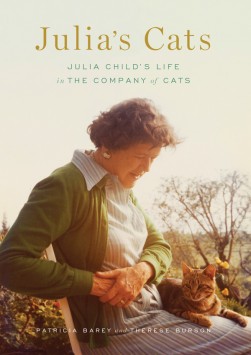
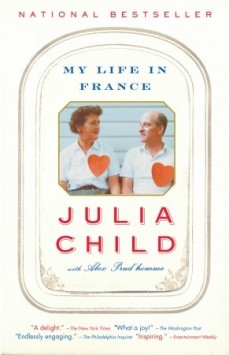
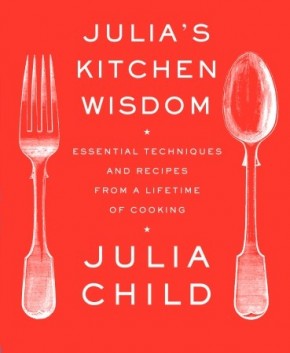

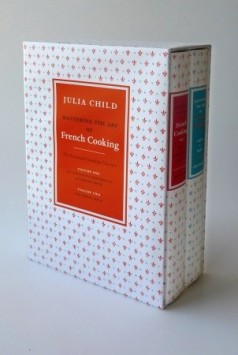
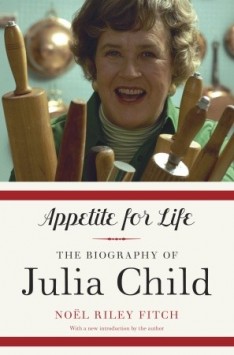
Leave a Reply